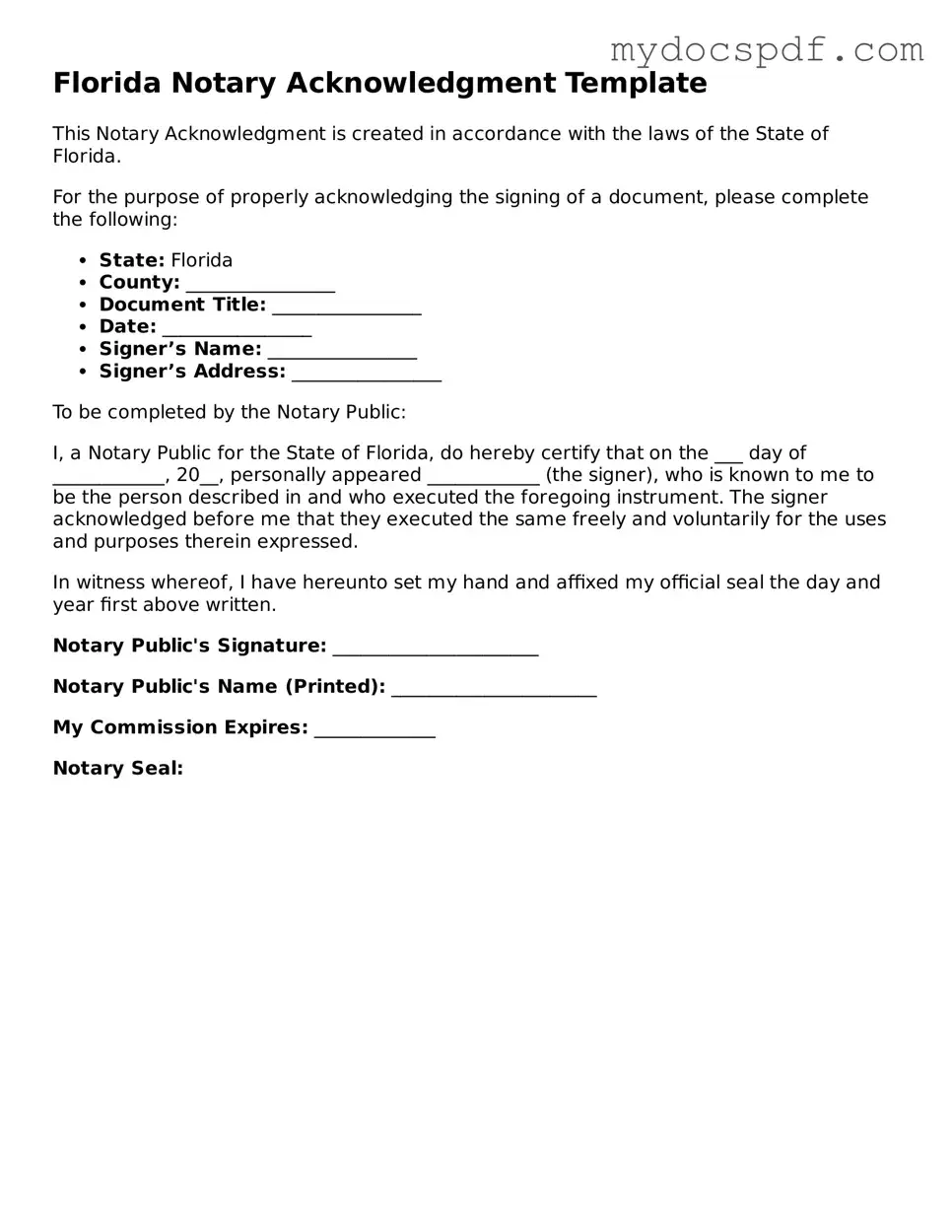Florida Notary Acknowledgment Template
This Notary Acknowledgment is created in accordance with the laws of the State of Florida.
For the purpose of properly acknowledging the signing of a document, please complete the following:
- State: Florida
- County: ________________
- Document Title: ________________
- Date: ________________
- Signer’s Name: ________________
- Signer’s Address: ________________
To be completed by the Notary Public:
I, a Notary Public for the State of Florida, do hereby certify that on the ___ day of ____________, 20__, personally appeared ____________ (the signer), who is known to me to be the person described in and who executed the foregoing instrument. The signer acknowledged before me that they executed the same freely and voluntarily for the uses and purposes therein expressed.
In witness whereof, I have hereunto set my hand and affixed my official seal the day and year first above written.
Notary Public's Signature: ______________________
Notary Public's Name (Printed): ______________________
My Commission Expires: _____________
Notary Seal:
